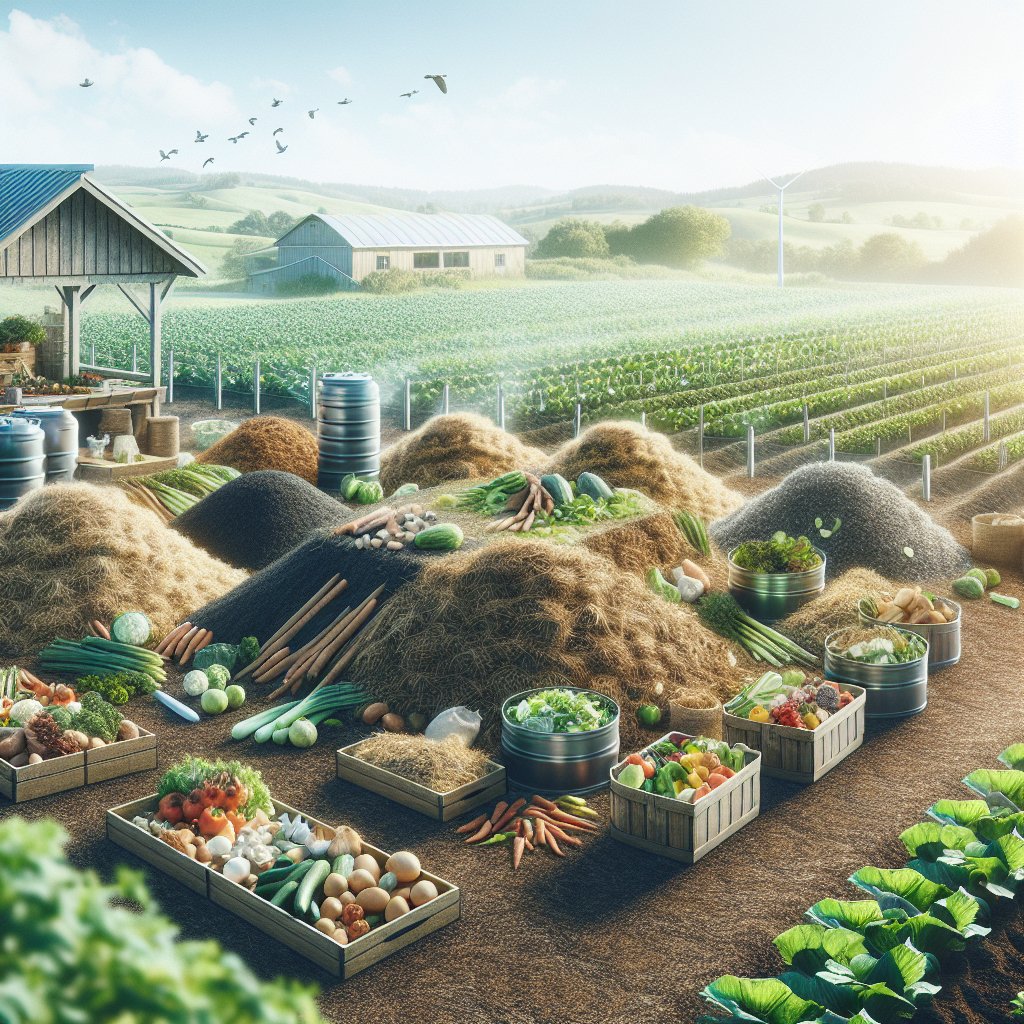
Composting is an essential practice for sustainable agriculture, offering numerous benefits for soil health, waste management, and crop productivity. By transforming organic waste into nutrient-rich compost, farmers can enhance soil fertility, reduce reliance on chemical fertilizers, and contribute to a more sustainable farming ecosystem. This article explores the best practices for composting on your farm, providing insights into effective techniques, materials, and management strategies to optimize the composting process.
Understanding the Basics of Composting
Composting is a natural process that involves the decomposition of organic materials by microorganisms under controlled conditions. The end product, compost, is a dark, crumbly substance rich in nutrients and beneficial microorganisms. To achieve successful composting, it is crucial to understand the basic principles and components involved in the process.
The Role of Microorganisms
Microorganisms, including bacteria, fungi, and actinomycetes, play a vital role in breaking down organic matter during composting. These microorganisms require specific conditions to thrive, including adequate moisture, oxygen, and a balanced carbon-to-nitrogen (C:N) ratio. By managing these factors, farmers can create an optimal environment for microbial activity, accelerating the decomposition process and producing high-quality compost.
Key Components of Composting
Successful composting relies on a balanced mix of organic materials, often categorized as “greens” and “browns.” Greens are nitrogen-rich materials, such as grass clippings, vegetable scraps, and manure, while browns are carbon-rich materials, including straw, wood chips, and dried leaves. A balanced C:N ratio, typically around 30:1, is essential for efficient decomposition. Additionally, maintaining proper moisture levels (about 50-60%) and ensuring adequate aeration are critical for promoting microbial activity and preventing anaerobic conditions.
Implementing Effective Composting Practices
To maximize the benefits of composting on your farm, it is important to implement effective practices that enhance the efficiency and quality of the composting process. This section outlines key strategies for managing compost piles, selecting appropriate materials, and optimizing environmental conditions.
Building and Managing Compost Piles
Constructing and managing compost piles effectively is crucial for successful composting. Start by selecting a suitable location that is easily accessible and has good drainage. Build the pile in layers, alternating between greens and browns to maintain a balanced C:N ratio. Regularly turning the pile helps to aerate the compost, promoting microbial activity and preventing odors. Monitoring temperature is also important, as it indicates microbial activity; a temperature range of 130-160°F (55-70°C) is ideal for pathogen reduction and efficient decomposition.
Choosing the Right Materials
The quality of compost depends largely on the materials used. Avoid using materials that may introduce contaminants, such as treated wood, diseased plants, or pet waste. Instead, focus on using clean, organic materials that are readily available on the farm. Incorporating a diverse range of materials can enhance the nutrient profile of the compost, providing a broader spectrum of benefits for soil health.
Optimizing Environmental Conditions
Maintaining optimal environmental conditions is essential for efficient composting. Ensure that the compost pile is kept moist but not waterlogged, as excessive moisture can lead to anaerobic conditions and slow decomposition. Adequate aeration is also crucial; turning the pile regularly helps to introduce oxygen and prevent compaction. Additionally, consider using a compost thermometer to monitor temperature and adjust management practices as needed to maintain optimal conditions.
Benefits of Composting for Farm Sustainability
Composting offers numerous benefits that contribute to the sustainability and productivity of farming operations. By recycling organic waste into valuable compost, farmers can improve soil health, reduce environmental impact, and enhance crop yields.
Enhancing Soil Health
Compost is rich in organic matter and essential nutrients, which improve soil structure, water retention, and nutrient availability. The addition of compost enhances soil fertility, promoting healthy root development and increasing the resilience of crops to environmental stressors. Furthermore, compost supports a diverse soil microbiome, which plays a crucial role in nutrient cycling and disease suppression.
Reducing Environmental Impact
By diverting organic waste from landfills and reducing the need for chemical fertilizers, composting helps to minimize the environmental footprint of farming operations. Composting reduces greenhouse gas emissions associated with waste decomposition in landfills and decreases the reliance on synthetic fertilizers, which can contribute to soil and water pollution. Additionally, composting supports carbon sequestration in soils, mitigating the impacts of climate change.
Improving Crop Yields
The application of compost can lead to improved crop yields by enhancing soil fertility and providing a slow-release source of nutrients. Compost improves soil structure, allowing for better root penetration and water infiltration, which are critical for plant growth. The increased microbial activity in compost-amended soils also enhances nutrient availability, supporting healthy and productive crops.
Conclusion
Composting is a valuable practice for farmers seeking to enhance the sustainability and productivity of their operations. By understanding the principles of composting and implementing effective management strategies, farmers can produce high-quality compost that benefits soil health, reduces environmental impact, and improves crop yields. As the agricultural industry continues to face challenges related to soil degradation and environmental sustainability, composting offers a practical and effective solution for building resilient and productive farming systems.

